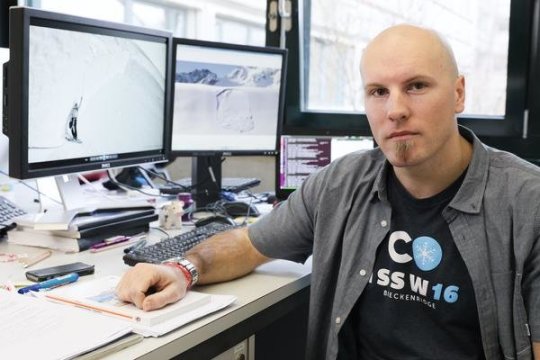[ad_1]
An avalanche is an extremely complex event, with countless parameters and physical variables coming into play from the time the avalanche is triggered until it ends. Johan Gaume, a researcher in the Laboratory of Cryospheric Sciences (CRYOS) and SLF,* has created a highly accurate digital simulation of an avalanche based on these parameters. His work, which offers unprecedented insight into how avalanches work, could be used to improve risk management in the mountains. It was published today in Nature Communications.**
The young avalanche expert spent several months last year at the University of California Los Angeles (UCLA) working with 3D modeling experts,*** some of whom had worked with Disney’s engineers to simulate the snow in the film Frozen.
Combining these mathematicians’ know-how with Gaume’s scientific expertise turned out to be a winning formula. The mathematicians were able to increase the accuracy of their snow simulation thanks to Gaume’s in-depth knowledge and the data and field observations collected and analyzed by Alec Van Herwijnen, Gaume’s SLF colleague and co-author of the study.
Adopting a whole new approach, the Swiss and US researchers created the first realistic, complete and scientifically rigorous simulation of a snow slab avalanche — a type of avalanche that occurs when a very clear linear crack appears at the top of the snowpack. This usually happens when, over a large area, there is a weak — and therefore not very cohesive — snowpack layer under the dense top layer of snow, known as the slab. Snow slab avalanches are hard to predict and often triggered by skiers or walkers, making them the most dangerous and the mostly deadly type of avalanche.
Double agent
“What made our approach so original was that we took account of the fact that the snow in that type of avalanche behaves like both a solid and a fluid,” explains Gaume.
A snow slab avalanche is usually triggered when there is an extra load — such as a crossing skier — on the snow, or when the snowpack is destabilized in some other way, for instance by an explosion. This causes a crack to appear in the bottom layer of snow, which can spread rapidly. At this point, the snow is behaving in accordance with the principles of solid mechanics. As the crack spreads, the weak layer’s porous structure causes it to collapse under the weight of the surface slab. Because of its mass and the slope, the slab is then released and begins to slide across the weaker layer. The collisions, frictions and fractures that the solid snow experiences as the top layer slides downward and breaks apart lead to a collective behavior characteristic of a fluid.
The researchers were able to simulate the collapse of the porous bottom layer for the first time at a large scale using a continuum approach. In addition, the model integrates only the relatively few key parameters that dictate how the snow will behave at the various stages of the process; these include the dynamics of the fracture, friction, and the level of compaction based on the type of snow.
The researchers borrowed a technique known as the Material Point Method, which is used to analyze how moving materials behave yet had never before been applied in the study of avalanche release. It underpinned the researchers’ novel approach to predicting avalanches — and therefore preventing them more effectively as well. “In addition to deepening our knowledge of how snow behaves, this project could make it possible to assess the potential size of an avalanche, the runout distance and the pressure on any obstacles in the avalanche’s path more accurately,” says Gaume.
The researcher’s simulations could also be applied in the arts — and especially in animated films.
Notes:
*CRYOS is run jointly by EPFL and the Swiss Federal Institute for Forest, Snow and Landscape Research (WSL). The Swiss Federal Institute for Snow and Avalanche Research (SLF) is part of WSL.
** “Dynamic anticrack propagation in snow,” J. Gaume, T. Gast, J. Teran, A. van Herwijnen,C. Jiang, Nature Communications, August 2018.
*** Joseph Teran and Theodore Gast, UCLA Mathematics Department, and Chenfanfu Jiang, University of Pennsylvania.
Story Source:
Materials provided by Ecole Polytechnique Fédérale de Lausanne. Original written by Sarah Perrin. Note: Content may be edited for style and length.
[ad_2]















